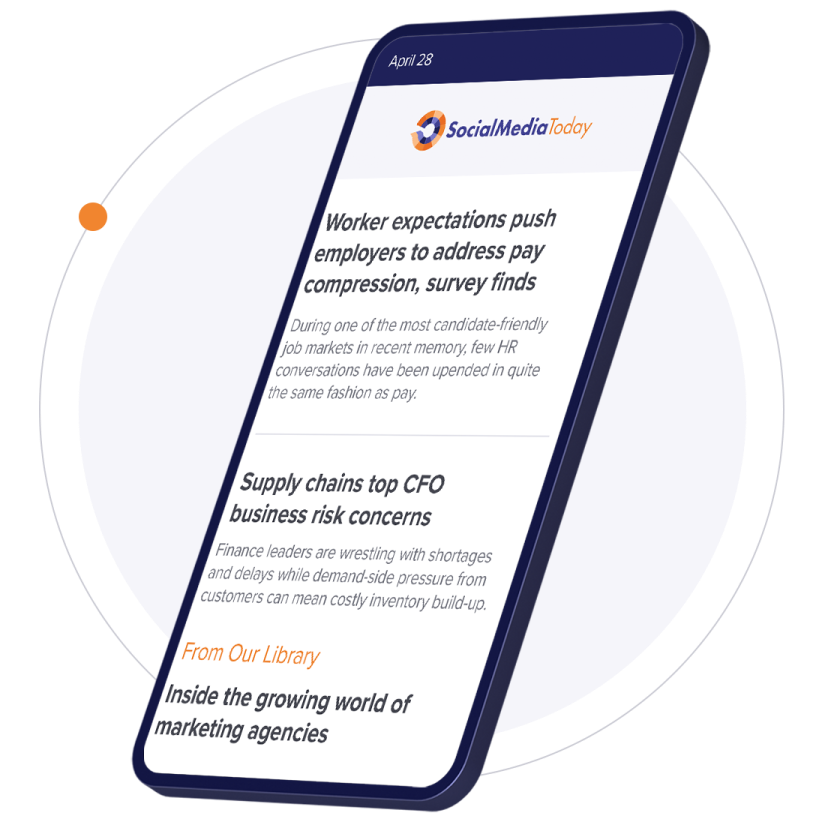Of course, this was always coming, but this week, as part of its latest earnings report, Google has confirmed that it’s launched an initial test of ads running between YouTube Shorts clips, its TikTok-esque short-form video feed.

And that’s not all – according to Google, Shorts is now averaging over 30 billion daily views. That’s a significant increase from the 5 trillion all-time Shorts views that YouTube reported back in February, which underlines the rising popularity of short-form content, and why every platform is now making it a focus.
Shorts ads will provide another monetization pathway for the option, a key consideration for YouTube, because while more people watching more Shorts content is good, overall, for the app, more time spent in Shorts also means less time spent with its other, monetizable video clips.
Google also noted this in its earnings call, saying that it was ‘experiencing a slight headwind to revenue growth’ as Shorts viewership grows as a percentage of total YouTube time.
So really, YouTube has to monetize shorts, and fast, in order to dilute its impact on overall earnings, while it also needs to establish new pathways for Shorts creators to maximize their earnings potential, and you can’t directly monetize short-form video clips with mid and pre-roll ads.
That adds a level of complexity to short video monetization, something that Vine grappled with back in the day (which eventually led to its closure), and which TikTok, Instagram, Snapchat and YouTube are also working to solve right now.
The main option that they’ve leaned on thus far is dedicated creator funding pools, from which creators can then earn an allocation of fund share based on the performance of their Shorts clips.
But that’s already proven problematic, with variable payouts and shifting incentives frustrating top creators, many of whom already earn big, reliable incomes from YouTube and Twitch, and are used to the established economics of online video streaming (which, it’s worth noting, may be changing on Twitch too).
The risk here is that if these platforms can’t establish solid revenue pathways for their top stars, then eventually, much like what happened with Vine, those top creators will gravitate towards the platforms that do offer more stable, lucrative funding arrangements. Which will inevitably lead them to YouTube anyway, which pays out billions every year to creators via its YouTube Partner Program.
In this sense, Shorts can act as a supplementary promotional channel for your main YouTube feed, where you can make real money – and with that as a lure, and with Shorts views rising so quickly, YouTube stands as the biggest challenge to TikTok’s ongoing dominance in the space, even if it does seem that, right now, TikTok is almost too big to fail at this stage of the game.
But it could – while Google also notes that:
“Over 40% of creators who received payment from the Shorts Fund in 2021 weren't in the YouTube Partner Program.”
That’s a huge amount of new voices that are now being paid by YouTube for their Shorts content, and if YouTube can establish a clearer pathway to getting more of them paid, more often, that will inevitably lead to them sticking with YouTube as their key platform of choice.
Ads in Shorts is another element in this, providing another revenue pathway for the option, that YouTube can then funnel back into its creator funding process, or invest in additional ways to advance its revenue share models.
No one has ‘cracked the code’ as such on the best way to pay short-form creators, but YouTube’s system is far more advanced than others. Building a more sustainable ad process is another step in this evolution.







